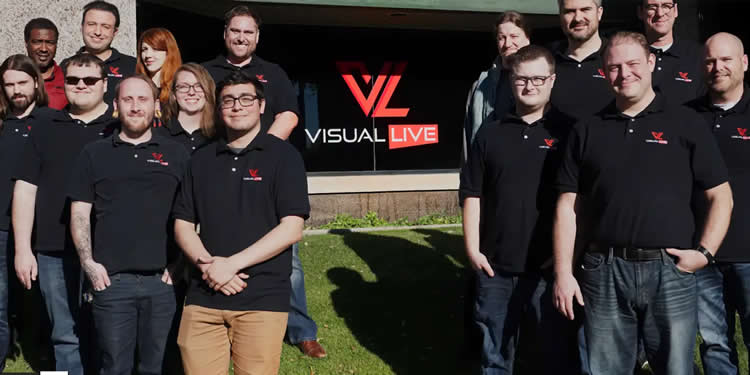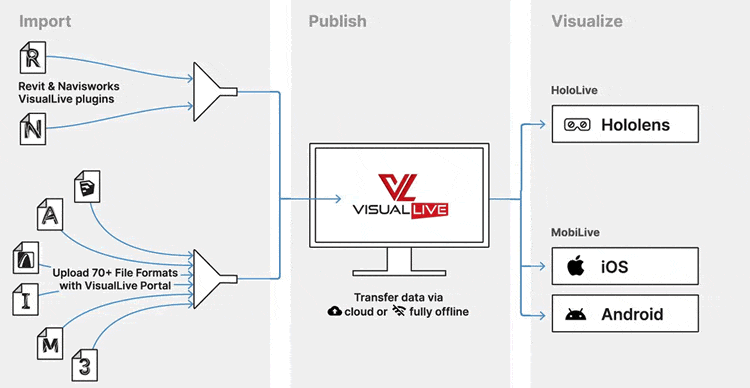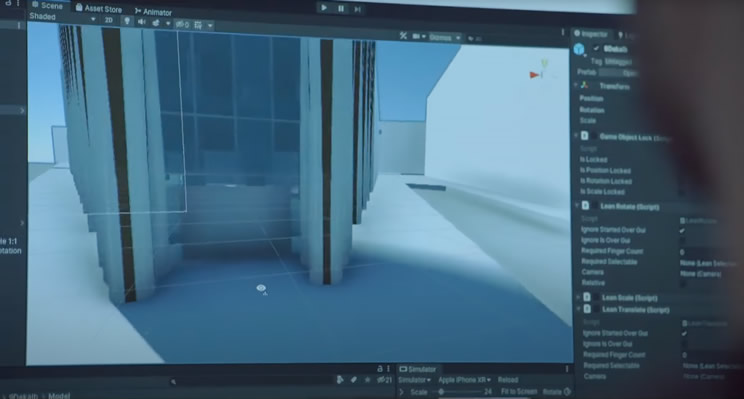Unity continues its expansion in various industries where 3D and VR/AR technologies are on the rise. The company’s 3D engine, which is used by Google’s DeepMind for AI training, has entered several industries beyond gaming for many years now.
On top of the film and automotive industry, Utility also, among others, serves the AEC (architecture, engineering, and construction) industry with its 3D technology since it started collaborating with Autodesk in 2018.
Augmented reality is increasingly used in the AEC industry, where BIM (building information modeling and management) plays a significant role in the data-intensive digital transformation of the sector.
BIM data are increasingly leveraged for digital twins and the ‘immersive experiences’ offered by AR. BIM integration also continues to expand with other technologies and platforms, including IoT, drones, GIS, 3D printing, etc. Data and cyber-physical convergence are the name of the game.

According to IDC “although construction firms are relatively immature in their digital transformation journey, after progressing through the downturn of the pandemic, they are planning to adopt big data and analytics, AI, IoT, and robotics to automate and improve decision making as they work with increasingly complex data sets”.
Although the AR market in construction is still relatively small, some forecast it to grow at a CAGR of 25 percent until 2026 with increasing AI penetration in the sector, heavy spending on construction of new buildings and highways ahead, and 3D mapping gaining high popularity as some factors.
Unity Reflect and VisualLive technology: better connecting the field with the design office
To further develop its presence in the construction industry, Unity acquires VisualLive, an Arizona-based start-up that enables ‘to bring the power of BIM on the job site’ and was founded in 2017.
VisualLive is a pioneer in offering an AEC platform that offers easy-to-use AR software on Microsoft HoloLens, Android, and iOS for design, engineering, and construction companies. To do so, AEC professionals can use the Autodesk Revit or Naviswork plugins or the web uploader interface, which VisualLive provides for 3D visualization and AR overlay on the job site via tablet, mobile, or Hololens.
AR and BIM are increasingly used together for various purposes. Several AEC companies who want to have an innovative edge and enable clients to ‘walk through the designs of their projects’ have embraced AR. So, there’s definitely a marketing aspect.

But AR isn’t just used for marketing in the AEC industry; on the contrary. While BIM has become essential for collaboration on many construction and infrastructure projects and digital twins are the natural and game-changing next step in the data-intensive construction space, AR offers several other benefits.
These are more or less the same benefits as AR can offer in industrial environments in general and additional advantages that are typical for the evolutions in architecture, engineering, and construction.
The current process of job site walkthroughs for construction and facilities management is fraught with human errors and the promise of reality capture, the process of replicating the physical world and putting it into virtual reality, is time-consuming and expensive. VisualLive ensures users can instantly inspect and validate designs to prevent costly mistakes.
AR across the lifecycle of projects
According to VisualLive, now part of Unity, its “applications are currently being used in all stages of construction projects such as design review, coordination, constructibility planning, fabrication QA/QC, install verification, field inspection, and facility management.”
Unity, the leading platform for creating and operating real-time 3D (RT3D) content, states that VisualLive enables the AEC industry to reduce costs and increase efficiency by visualizing and collaborating in AR.
Several leading AEC players already use Unity to streamline real-world architecture, engineering, and construction workflows. Since 2018, the company started supporting a suite of Autodesk products and enabling Autodesk users to access real-time 3D experiences on a range of devices in AR and VR to “bridge the gap between design and construction” and “connect people, project stages, and data across the digital building lifecycle.”

With VisualLive, Unity can go further since the technology of VisualLive is complementary to Unity Reflect. Unity Reflect is Unity’s real-time 3D solution for building information modeling workflows, announced at Autodesk University Las Vegas 2018 and officially launched end of 2019.
Julien Faure, GM of Verticals, Unity: “Adding VisualLive to our portfolio better allows us to connect the field with the design office, bringing BIM data via augmented and mixed reality to drive better quality assurance and project tracking. This will fundamentally change how design reviews, construction planning, field inspections, and facilities management are conducted.”
All pictures belong to their respective mentioned owners and serve illustration purposes.

